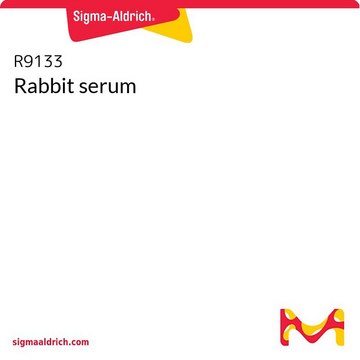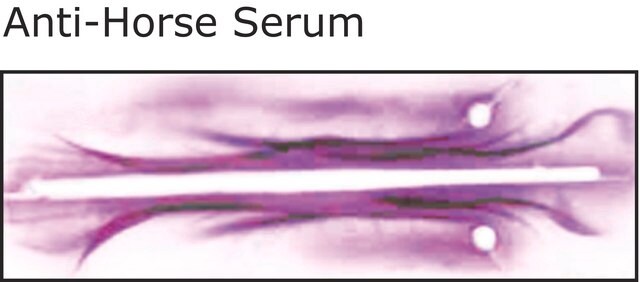B9433
Bovine Serum, Adult
USA origin, sterile-filtered, suitable for cell culture
Synonym(s):
Bovine sera, cow sera, cow serum
Sign Into View Organizational & Contract Pricing
All Photos(1)
About This Item
UNSPSC Code:
12352207
eCl@ss:
32160409
NACRES:
NA.71
biological source:
bovine
origin:
USA origin
sterility:
sterile-filtered
form:
liquid
shipped in:
dry ice
Recommended Products
biological source
bovine
Quality Level
sterility
sterile-filtered
form
liquid
composition
hemoglobin, ≤50 mg/dL
origin
USA origin
technique(s)
cell culture | mammalian: suitable
impurities
≤50 EU/mL endotoxin
shipped in
dry ice
storage temp.
−20°C
General description
Bovine serum (BS) is considered a cost-effective choice than fetal bovine serum (FBS). It can also be preserved stable for a long time.
Application
Bovine Serum, Adult has been used:
- to treat silicone square to prepare it for the biofilm assay for in vitro biofilm growth conditions
- in cell culture as a component in Dulbecco′s modified Eagle medium for digesting articular cartilage and proximal metacarpals
- as a lubricating solution in hydrodynamic analysis and to imitate the synovial joints
Biochem/physiol Actions
Adult bovine serum (BS) possesses bactericidal activity against Helicobacter pylori. Heat-treated BS can be used as the best serum source of H. pylori culture medium.
Storage Class Code
10 - Combustible liquids
WGK
WGK 3
Flash Point(F)
Not applicable
Flash Point(C)
Not applicable
Personal Protective Equipment
dust mask type N95 (US), Eyeshields, Gloves
Choose from one of the most recent versions:
Already Own This Product?
Find documentation for the products that you have recently purchased in the Document Library.
Customers Also Viewed
Fu-Sheng Deng et al.
Virulence, 9(1), 866-878 (2018-05-05)
An epigenetic transition between white cells and opaque cells influences several properties of Candida albicans biology, including cellular morphology, biofilm formation, virulence, and sexual mating. In particular, these two cell types exhibit marked differences in their ability to undergo sex.
Priya Uppuluri et al.
Virulence, 1(6), 483-487 (2010-12-24)
Candida albicans can develop biofilms on medical devices and these biofilms are most often nourished by a continuous flow of body fluids and subjected to shear stress forces. While many C. albicans biofilm studies have been carried out using in
Nuclear maturation of immature bovine oocytes after vitrification using open pulled straw and cryotop methods.
Hadi, H
African Journal of Biotechnology, 10, 2334-2339 (2013)
Clarissa J Nobile et al.
Eukaryotic cell, 5(10), 1604-1610 (2006-10-13)
Hwp1 is a well-characterized Candida albicans cell surface protein, expressed only on hyphae, that mediates tight binding to oral epithelial cells. Prior studies indicate that HWP1 expression is dependent upon Bcr1, a key regulator of biofilm formation. Here we test
Whitni K Redman et al.
Frontiers in cellular and infection microbiology, 10, 379-379 (2020-08-15)
Chronic wounds will impact 2% of the United States population at some point in their life. These wounds are often associated with a reoccurring, chronic infection caused by a community of microorganisms encased in an extracellular polymeric substance (EPS), or
Articles
Find answers to frequently asked questions (FAQs) about FBS and other serum products, and links to related products.
Our team of scientists has experience in all areas of research including Life Science, Material Science, Chemical Synthesis, Chromatography, Analytical and many others.
Contact Technical Service






